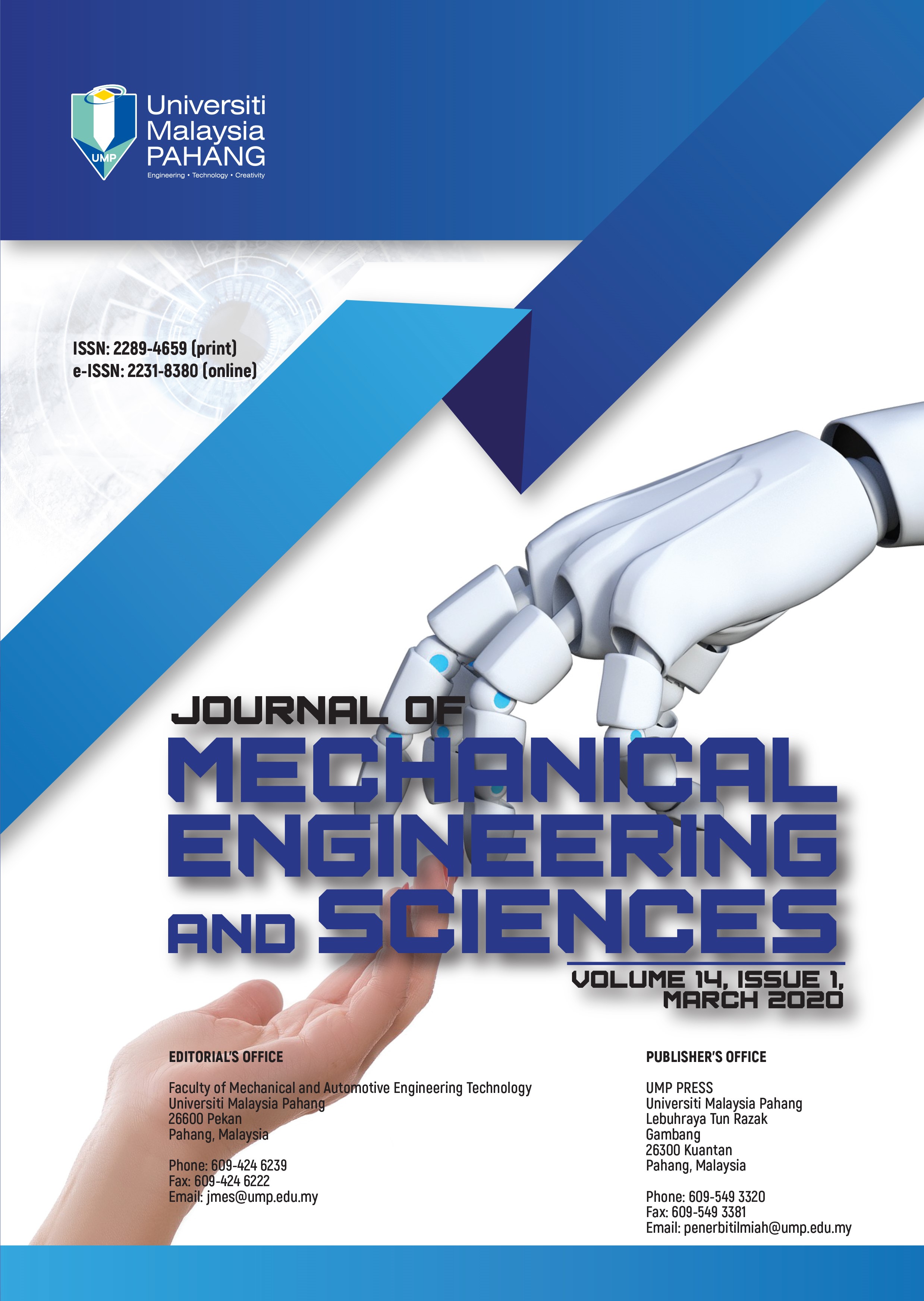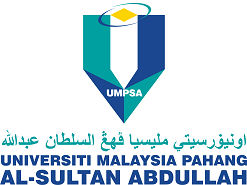Modeling of blood clot removal with aspiration Thrombectomy devices
DOI:
https://doi.org/10.15282/jmes.14.1.2020.03.0488Keywords:
Blood clot removal, Modelling, FEM, Numerical methodsAbstract
Thrombectomy by aspiration is a highly effective method of accomplishing vessel recanalization. This study aims to obtain a mathematical model that allows the prediction of the dynamic response of a thrombus in response to different suction conditions, in order to avoid potential damage or the breakage of the clot during the interventional procedure. Virtual computing models have been created using Bond-Graph data and mass-spring Multi-Degree of Freedom equations. The model allows the use of tensile and torsion loads that could potentially be generated by the suction pressure together with different catheter geometries. The stress generated in the clot depends on its length and on its stiffness. The results obtained with the mathematical model are validated with a Finite Element Method (FEM) model, shows good agreement in terms of stress and elongation values. The results are consistent with previous Bond Graph models which indicated that the forces needed to extract a blood clot from an artery in in-vitro experiments are within the range used experimentally (~40-90 kPa). Qualitative experiments are undertaken with 3D printed scale prototypes and gelatin. The results are consistent with Computer Fluid Dynamic (CFD) simulations.
References
Scarborough P et al. Stroke Statistics. British Heart Foundation and Stroke Association. . Department of Public Health, University of Oxford. 2009:12-13.
Spiotta AM, Chaudry MI, Hui FK,et al. Evolution of thrombectomy approaches and devices for acute stroke: A technical review. Journal of Neurointerventional Surgery. 2015;7(1):2–7.
Hesse AC, Behme D, Kemmling A, Zapf A, Hokamp NG, Frischmuth I et al. Comparing different thrombectomy techniques in five large-volume centers: A “real world” observational study. Journal of NeuroInterventional Surgery 2018; 10(6):525-529.
Son S et al. Comparison of Solitaire thrombectomy and Penumbra suction thrombectomy in patients with acute ischemic stroke caused by basilar artery occlusion. Journal of Neurointerventional Surgery. 2014; 8(1):13–18.
Mokin M, Ionita CN, Nagesh SVS, Rudin S, Levy EI, Siddiqui AH. Primary stentriever versus combined stentriever plus aspiration thrombectomy approaches: In vitro stroke model comparison. Journal of Neurointerventional Surgery 2015; 7(6):453–457.
Mokin M, Nagesh SVS, Ionita CN, Mocco J, Siddiqui AH. Stent retriever thrombectomy with the Cover accessory device versus proximal protection with a balloon guide catheter: In vitro stroke model comparison. Journal of Neurointerventional Surgery. 2016; 8(4):413–417.
Davis S, Lees K, Donnan G. Treating the acute stroke patient as an emergency: current practices and future opportunities. International Journal of Clinical Practicews. 2006; 60(4):399-407.
Gobin YP, et al. MERCI 1: A phase 1 study of mechanical embolus removal in cerebral ischemia. Stroke. 2004; 35(12):2848–2854.
Bose A et al. The penumbra system: A mechanical device for the treatment of acute stroke due to thromboembolism. American Journal of Neuroradiology 2008; 29(7):1409–1413.
Fanous AA, Siddiqui AH. Mechanical thrombectomy: Stent retrievers vs. aspiration catheters. Cor et Vasa. 2016;58(2):193-203.
Lapergue et al. A direct aspiration, first pass technique (ADAPT) versus stent retrievers for acute stroke therapy: An observational comparative study. American Journal of Neuroradiology 2016; 37(10):1860-1865.
Bonnette M, Morris D. Thrombectomy catheter system (patent US2014303658A1).
Cosigny P. Spiral thrombectomy catheter (patent US2013060206A1).
Milner K, Barnett A. Thrombectomy catheter with flow directing mechanism (patent US2015133973A1).
Pearce G, Perkinson ND. Biomechanical probe international patent corporate treatise (WO2006120464); European patent (ep1893195 (a2)); Japanese patent (jp2008639924 (t)); Chinese patent (cn101208049 (a)).
Pearce G, Brookfield P, Burley M, Murcott D, Perkinson ND, Spence J, Wong J. The ‘GP’ mechanical thrombectomy device: Measurements and modelling, using laboratory models, applications of geometric algebraic techniques and cadaveric brains. Journal of Stroke and Cerebrovascular Disease. 2009; 18(4) 288-293.
Tennuci C, Pearce G, Wong J, Nayak S, Jones T, Roffe C. Comparison of the effectiveness of three methods of recanalization in a model of the middle cerebral artery: Thrombus aspiration via a 4F catheter, thrombus aspiration via the GP thromboaspiration device and mechanical thrombectomy using the solitaire thrombectomy device. Stroke Research and Treatment. 2011;186424.
Goswami P, Mandal DK, Manna NK, Chakrabarti S. Numerical investigations of various aspects of plaque deposition through constricted artery. Journal of Mechanical Engineering and Sciences. 2019; 13(3) 5306:5322.
Chitsaz A, Nejat A, Nouri R. Three-dimensional numerical simulations of aspiration process: Evaluation of two penumbra aspiration catheters performance. Artificial Organs. 2018;42(12):406-419.
Al-Dulaimi MJ, Hamad FA, Rasool AAA, Ameen KA. Effect of sand particles on flow structure of free jet from a nozzle. Journal of Mechanical Engineering and Sciences. 2019;13(3):5542:5561.
Romero G, Higuera I, Félez J, Pearce G, Perkinson ND. Modelling and simulation of a thrombectomy probe applied to the middle cerebral artery by using the bond graph technique. 9th International Conference on Bond Graph Modeling and Simulation. 2010; 172-179.
Romero G, Martinez ML, Pearce G, Mera JM. An investigation into the performance of a new mechanical thrombectomy device using bond graph modeling: application to the extraction of blood clots in the middle cerebral artery. Simulation. 2013; 89(3):381–391.
Downloads
Published
Issue
Section
License
Copyright (c) 2020 The Author(s)

This work is licensed under a Creative Commons Attribution-NonCommercial 4.0 International License.






